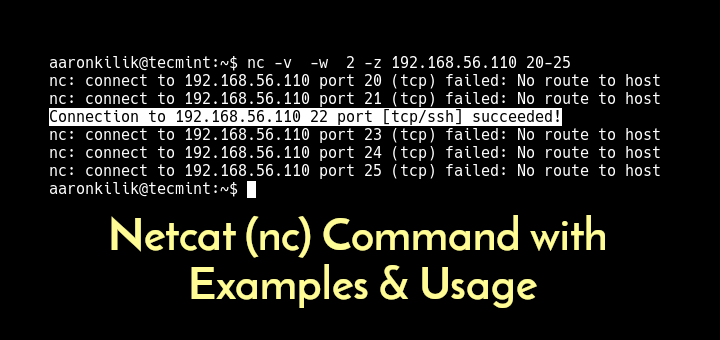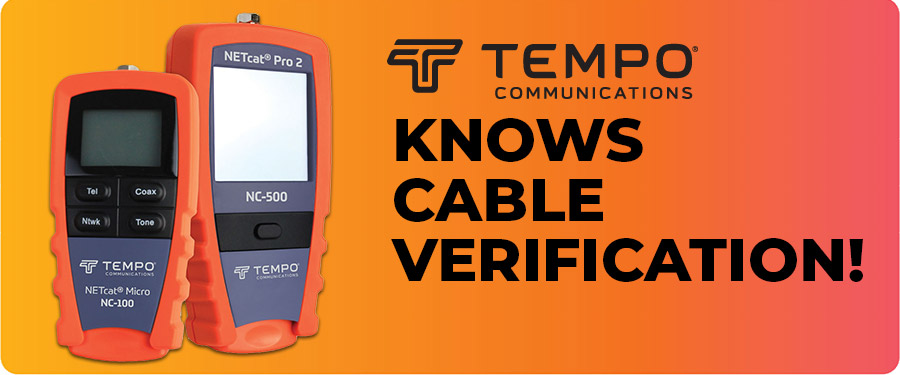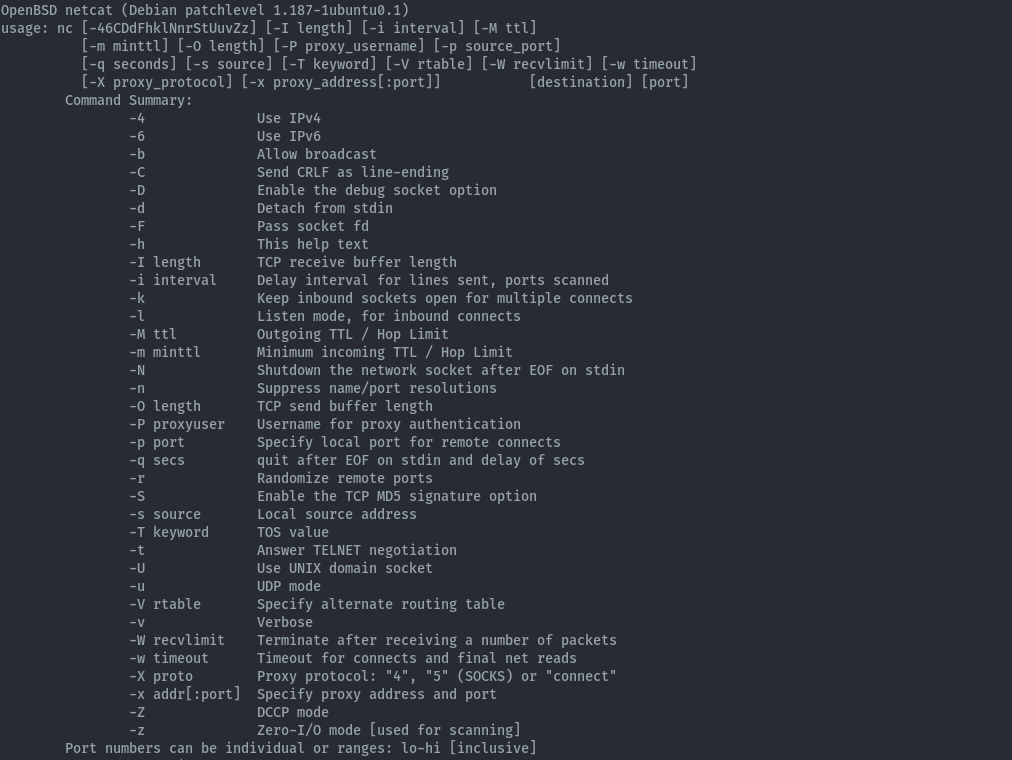
Now our system will start listening a udp port ‘1234’, we can verify this using below netstat command, $ netstat -tunlp | grep 1234 But we can also make connections to UDP ports, for that we can use option ‘u’, $ ncat -l -u 1234 Example: 3) Connecting to UDP portsīy default, the nc utility makes connections only to TCP ports.

This will tell what software is being used to run the web Server. Or we can get banner for OS fingerprinting with the following, Like we can get the complete page content with Now a connection to server with IP address 192.168.1.100 will be made at port 80 & we can now send instructions to server. To connect to a remote system with nc, we can use the following command, Server will now start listening to port 8080 for inbound connections. Ncat can work in listen mode & we can listen for inbound connections on port number with option ‘l’. In this tutorial, we are going to learn about how to use ‘nc’ command with 10 examples, Example: 1) Listen to inbound connections We can also cause it to capture data being sent by client to understand what they are upto. Admins can also use it as a client for auditing web servers, telnet servers, mail servers etc, with ‘nc’ we can control every character sent & can also view the responses to sent queries. System admins can use it audit their system security, they can use it find the ports that are opened & than secure them. You need to install using the following command. But in minimal CentOS 7 / RHEL 7 installation you will not find nc as a default package. Thanks go to Rodney Beede for putting this together.ĭownload nc111nt_safe.In most of Debian distributions ‘nc’ is available and its package is automatically installed during installation. It is compiled with the -e remote execution option disabled. If you are having problems due to antivirus programs detecting this as a threat, the following version may be helpful to you. I'm sure you are really just here for the download.ĭownload nc111nt.zip (password:nc) - Netcat for Windows If you'd like to learn more about netcat, I can recommend this book (I served as the technical editor):

Remote machine: nc -e /bin/bash local_machine 1234.Remote machine: nc -l 1234 -e /bin/bash.

I have put together a few examples of what this can be used to accomplish.Įstablishing a connection and getting some data over HTTP: # nc 80 It allows you to read and write data over a network socket just as simply as you can read data from stdin or write to stdout. It's a wonderful tool for debugging all kinds of network problems. Netcat is a simple networking utility which reads and writes data across network connections using the TCP/IP protocol.

Netcat for Windows Home Tech CV Contact Netcat for Windows


 0 kommentar(er)
0 kommentar(er)
